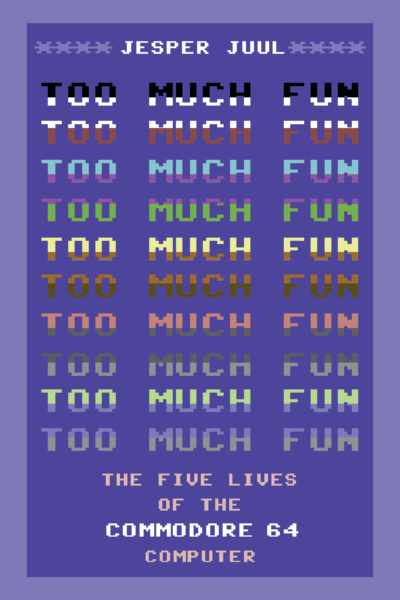On the occasion of my upcoming book Too Much Fun: The Five Lives of the Commodore 64 Computer, I am writing The History of the Commodore 64 in Twelve Objects, posted weekly from November 1st, 2024:

(C64 Wiki)
Object #6: Wizball and other Scrolling Games
What even is the 1987 game Wizball (Sensible Software)? With glowing reviews and a spot on many “best C64 games ever”-lists, in this game you are a wizard wrapped in a ball, at first hard to control, but gradually acquiring new skills and a cat companion. The world has lost its color, and your job is to collect colors, making the world whole and saturated.
Like many early C64 games, it is unclear what genre the game belongs to. This horizontally scrolling game is a bit like Defender in its shooting, but more like an action-adventure platformer in the way you traverse the world and collect objects. Like other C64 games, it is famous for its music, this one by Martin Galway.
The Commodore 64 came out in 1982, and the first smoothly scrolling games followed in 1983 (International Soccer, Son of Blagger, Neoclyps, and Wanted: Monty Mole). When did PCs have smoothly scrolling games then? This is usually said to be ID Software’s 1990 Commander Keen. IBM appears to have made a conscious decision not to add game-related features, and hence THE PC WAS NEARLY A DECADE BEHIND.
Along with the Atari 8-bit computers, the C64 could do what its main competitors (ZX Spectrum, Apple II, IBM PC, Amstrad) could not: The C64 video chip, the VIC-II, allowed for games that smoothly scrolled around a larger world. “Scrolling” is not a genre today, but the scrolling facility allowed for the early C64 tradition of action-adventure games and action-adventure platformers (predating say Nintendo’s games by many years).
The 1983 Wanted: Monty Mole instructed players to REMEMBER IT’S NOT JUST A PLATFORM GAME ITS AN ADVENTURE, emphasizing the newness of combining action with exploration. The C64 hardware thus enabled a whole subgenre of action-adventure games.
When European developers later made games of open exploration, say Grand Theft Auto, it was not surprising, as these were the kind of games they had grown up on.
What scrolling games do you remember?
Coming December 13th: Object #7 – The SID Chip – Commodore 64 Music









 On the occasion of my upcoming book
On the occasion of my upcoming book 





 On the occasion of my upcoming book
On the occasion of my upcoming book 
